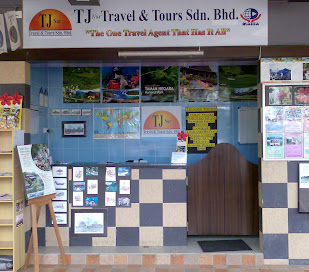A Beacon of Hope

| The Penang National Park (Taman Negara Pulau Pinang) is one of the few natural forested areas left on the island. It is also currently the world's smallest national park. The Park is located at the north-western corner of Penang Island, on what resembles the side profile of a face, hence the name Muka Head (muka literally means face). With 1181 hectares of forest and 1381 hectares of wetlands, the Park's ecosystem is a diversity of habitats with hills, sandy and rocky beaches, streams and coastal forests - representing much of the natural habitats of Penang. | |||||||||||||||||||
| Way back in 1958, the Pantai Acheh Forest Reserve was first proposed as a nature conservation area by a group called the "Committee for the Preservation of Natural Beauty". Since that time, both nature interest groups and even government reports have proposed that the Reserve be turned into some kind of park and conservation area. The Malaysian Nature Society (MNS) made several representations to the state and federal governments to turn Pantai Acheh into a national park. It was on 4 April 2003 when Pantai Acheh Forest Reserve was finally declared the Penang National Park by the then deputy Prime Minister Datuk Seri Abdullah Ahmad Badawi. The Penang National Park is the first protected area legally gazetted under the National Park Act of 1980, signifying the State and Federal Governments' efforts in protecting the environment. It goes without saying that funds will be allocated to develop the Penang National Park, within guidelines. All logging activities stopped since 1996. Part of the Pantai Acheh Forest Reserve had been logged before 1955; none have been logged since. | |||||||||||||||||||
 |  | ||||||||||||||||||
The Park is unique as it contains several different types of habitat including a meromictic lake, wetlands, mangroves, mudflats, coral reefs and turtle nesting beaches. A survey conducted by the MNS, together with Universiti Sains Malaysia (USM) indicated a reasonable rich fauna. Small mammals such as tree shrews (tupai glis), slow loris, flying lemur (Cynocephalus variegates), civet cats, lepoard cats, sea otters and pangolins have been spotted. If you're lucky, some of these shy creatures make an occasional appearance at Pantai Keracut, where the meromictic lake is located. Besides mammals, the Park is also home to many birds, reptiles, amphibians and of course the famous turtles, especially the Green turtles (Chelonia mydas), the Ridley turtles (Lepidochelys olivacea), the Leatherback turtles and the Hawksbill turtles (Eretmochelys imbricate). When you are at the Park, look up and see if you can spot a Brahminy Kite, White-bellied Sea-eagle or the Crested Serpent-eagle that are commonly seen soaring gracefully above. If you come across any snakes along your path, you would be happy to know that most of the snakes at the Park are non-poisonous. However, take note that there is no sure way to tell a poisonous from a non-poisonous snake, thus it is best to keep your distance from them. Did you know that spiders, scorpions, centipedes and millipedes belong to the same group - Arthropada? They are, however, from different classes. Keep an eye out for these little creatures along your hiking trail. Insects, by far, are the most numerous denizens of the Park. The flora at the Park is one which is characteristic of the coastal dipterocarp (or winged seeds) forest. 'Wings' help seeds to have a better chance of being blown far from the parent. Some trees from the Dipterocarp family are Chengal, Meranti Seraya, Jelutong, Gaharu and Bintangor. When cultivated, these trees provide valuable and aesthetic hardwood. Other plants that populate the Park include ferns, palms, pitcher plants, meromictic flora, climbers, fungi and mangrove. There are altogether an estimated 417 flora and 143 fauna species, according to a local daily report in May 2006. | |||||||||||||||||||
 |  | ||||||||||||||||||
Facilities at the Park Penang National Park only receives daily visitors. For camping, visitors are requested to seek permission from the management. Camping and weekend programmes organised by the National Park are also available for students who are interested in this activity. However, accommodation is not provided in the National Park. Visitors are recommended to stay at the nearest hotels around Batu Ferringhi and Teluk Bahang. Visitors are also reminded the deposit their litter in the 'monkey-proof' trash bins where one has to push a leaver to open the hatch. The bins are located along popular hiking trails. Remember, pick nothing up (except rubbish!) and leave nothing behind. Rest stops equipped with picnic tables are also strategically placed throughout the Park for your enjoyment. Penang National Park offers vast opportunities for research, education, recreation and ecotourism activities such as climbing, trekking, swimming, wildlife observation or simply enjoying the natural environment, which is a combination of the forest and sea. Rich in biodiversity and wildlife, the park has attracted world-renowned scientists, researchers and even the National Geographic crew to study and learn from its pristine surroundings. In this pocket of undisturbed natural beauty, we must learn to appreciate the natural heritage and help to promote their conservation for future generations. | |||||||||||||||||||

.JPG)


.jpg)
0 comments:
Post a Comment